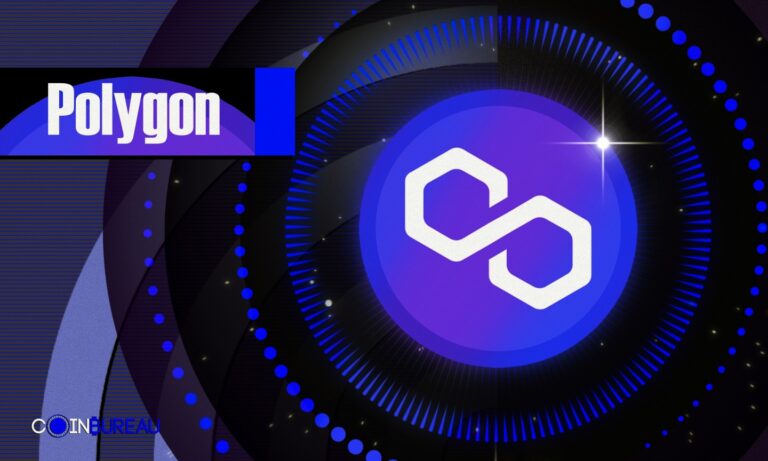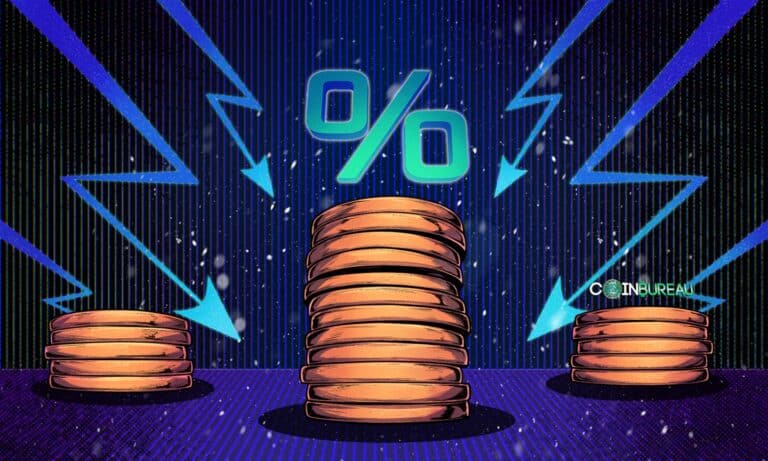If You're a newbie to cryptocurrency, perhaps you have heard of Ethereum but are now confused about Ethereum (ETH) vs Ethereum Classic (ETC).
The split between Ethereum Classic and Ethereum was the result of a hard fork in the original Ethereum blockchain in 2016 after an unknown hacker gained access to Ethereum Classic. This article will explore Ethereum vs Ethereum classic to give you a better understanding of their similarities and differences.
What is Ethereum? Summary:
Ethereum (ETH) is a popular public blockchain network and widely traded cryptocurrency with no fixed supply. It is the #2 listed cryptocurrency on Coin Market Cap, second only to Bitcoin (BTC). The Ethereum blockchain is one of the most trusted networks for smart contracts and dApps.
What is Ethereum Classic? Summary:
Ethereum Classic (ETC) has a fixed supply, is not nearly as popular or widely used as Ethereum, and is mainly used as a speculative digital asset listed in the top thirty cryptocurrencies on Coin Market Cap.
Page Contents 👉
Pros and Cons of Ethereum vs Ethereum Classic
The Pros
| Ethereum | Ethereum Classic |
| As Ethereum has switched to PoS (proof of stake) consensus, it is more energy efficient than PoW | It runs on a PoW (proof of work) Consensus mechanism. |
| Ethereum has the most developers of any blockchain network | ETC is cheaper than ETH |
| It is smart contract capable | It is smart contract capable |
| It has the biggest community of loyal supporters | It also has a large, loyal and dedicated community because it is a hard fork of Ethereum |
| Is highly secure |
The Cons
| Ethereum | Ethereum Classic |
| High transaction costs (gas fees) | PoW (proof of work) consensus process is energy intensive |
| Unlimited Supply | Has endured several 51% attacks |
| Not equipped for scalability |

Ethereum: A Brief History
Ethereum is an open-source, decentralized blockchain for smart contracts and decentralized applications (dApps). It's the second-largest listed cryptocurrency by market capitalization on Coin Market Cap. Ethereum's native cryptocurrency token is Ether( ETH).
Vitalik Buterin first mentioned Ethereum in an authored whitepaper in 2013 and, in 2014, secured over $18 million (in Bitcoin) for the Ethereum project. The price of Ethereum's ICO (Initial Coin Offering) was a lowly $0.311 and sold over 60 million. The official launch of the Ethereum Foundation followed in July 2015, with the blockchain prototype name “Frontier.”
Ethereum began with eight founders, a team that met and collaborated on the idea for the blockchain in Switzerland in 2014. Early co-founders included Gavin Wood, the Polkadot creator and Charles Hoskinson, the Cardano co-founder. The former co-founder, Gavin Wood, said about Ethereum that it was to become “one computer for the entire planet.”
The founders' goal for the Ethereum blockchain began as a drive to become the global platform for decentralized applications (dApps), enabling users worldwide to write and operate secure, censorship-resistant software without downtime.
Since Ethereum launched, there have been multiple updates, including the London Hard Fork update in 2021. Ethereum began as a proof of work (PoW) consensus mechanism but started its transition to proof of stake (PoS) in 2022. The transition to Ethereum 2.0 was not without problems.
To get to the proof of stake / PoS-enabled state, the PoS-enabled Beacon Chain had to merge with the mainnet. There were several delays, but Ethereum's loyal followers maintained their trust and belief in the project. Though there were delays, the Ethereum merge went down in history as one of the most successful computational feats in history. In fact, Walter Estlander had this to say about the undertaking:
“A simplified way at looking at the update is that it is similar to changing the engine of an airplane mid-flight.”
The Ethereum blockchain hosts tens of thousands of other tokens (cryptos) through its ERC-20 standard.
What is ERC-20?
ERC-20 is an Ethereum blockchain technical scripting standard. It includes a set of specific actions and rules for a smart contract or Ethereum token to follow and steps for implementation on the network.

Ethereum Classic and the DAO
In 2016, a DAO launched on the Ethereum blockchain.
A DAO is an organisation built on top of a blockchain and is without leaders. Instead, it acts more like a cooperative. Holders of the DAO token (“stakeholders”) have governance on every decision of the DAO instead of a centralised governing body.
In reality, those with the highest token “stakes” in the DAO have more voting power, including “whales” that may own millions of tokens for the DAO, calling into question the decentralized nature. That, however, is a discussion for another day.
This DAO (decentralized autonomous organisation) raised ETH valued at $150 million from 11,000 investors in a token sale. The process involves “locking” tokens for a predetermined period before the DAO begins live operations. During the token sales, computer scientists expressed concerns about wallet vulnerabilities.
Unfortunately, it was too late. As programmers worked to fix the bug, hackers penetrated the code vulnerabilities. Subsequently, the Ethereum blockchain created the fork to recover the stolen assets, totalling over $60 million of ETH. However, the DAO members did not unite in the decision, and after much debate and drama, the network split into two separate networks, Ethereum and Ethereum Classic.
The fork was like implementing a restore point in a computer as it rolled back the Ethereum network history to before the attack. Many people, such as the network miners (who receive block rewards), developers, node operators and exchanges, had to agree with the decision, primarily because it required software changes to assist the fork.
After the Ethereum hard fork, stolen funds were returned to its members.
The Ethereum blockchain was only a year old. This controversial incident could have created catastrophic repercussions for the Ethereum network by questioning the security and immutability of the technology underpinning the Ethereum network. Those who did not support the fork supported Ethereum Classic, and those who agreed with the decision supported Ethereum.
The entire event shook the loyal Ethereum community and became time-stamped as a historical event in blockchain history. It showed the resilience and fortitude of Vitalik Buterin as a founder who made challenging decisions for the good of the network. Subsequently, Ethereum is an essential pillar for decentralized networks across the globe.
Advantages of Ethereum vs Ethereum Classic
Ethereum has a Larger Community and Ecosystem
Compared to Ethereum Classic, Ethereum has a large, loyal, and active community and ecosystem. The Ethereum blockchain has more active developers, users, and businesses working on the network. Such activity leads to greater levels of innovation, adoption, and platform growth.
Ethereum has an extensive and diverse set of applications and use cases, such as decentralized finance (DeFi), non-fungible tokens (NFTs), and decentralized applications (DApps). These applications and use cases are more advanced, robust, and feature-rich than those on the Ethereum Classic network.
Higher Security and Scalability
Ethereum continually commits to higher levels of security and scalability by implementing multiple upgrades and improvements, the most notable being the transition from a PoW (proof of work) consensus mechanism to a PoS (proof of stake) consensus. A PoS algorithm reduces energy consumption, as it does not need miners and enhances the Ethereum network security.
Additionally, Ethereum has implemented several layer 2 scaling solutions, such as Rollups, which significantly increase the network's throughput and reduce transaction fees while maintaining high security and decentralization.
More Active Development and Upgrades
Ethereum has a dynamic, committed, and active development community that is constantly working to improve the network and add new features and functionalities.
Ethereum has implemented several upgrades and improvements, such as the recent London hard fork, which introduced significant changes, such as EIP-1559, that significantly improved the network's performance and usability.
Moreover, Ethereum has a clear and well-defined roadmap, an essential component for blockchain growth and scalability. The roadmap outlines Ethereum's future direction and goals, providing clarity and certainty for developers and businesses, which helps facilitate planning, investment, and innovation.
Better Governance and Decision-making
Ethereum has a more decentralized and democratic governance model than Ethereum Classic.
Decisions regarding the Ethereum network's development and upgrades are made through a transparent and community-driven process involving stakeholders (ETH) and users in the decision-making process.
Additionally, Ethereum has implemented several governance protocols, such as EIP-1559, which introduced a fee burn mechanism that reduces supply inflation, improves the user experience, and provides a clear revenue stream for Ethereum development.
More Recognized and Adopted
Ethereum is more recognized and adopted compared to Ethereum Classic. Ethereum has a stronger brand, a more extensive marketing and educational campaign, and greater exposure and recognition in the mainstream media and among the crypto-enthused public.
Moreover, Ethereum has a more extensive and diverse user base, including developers, businesses, investors, traders, and enthusiasts, that provides a more vibrant and active ecosystem that facilitates adoption, innovation, and growth.

Does Ethereum Have a Future?
The entire cryptocurrency market plunged into a bear market in 2022 as the COVID pandemic caused significant global disruption. Rising prices, unemployment and uncertainty about a worldwide recession created a ripple effect across all financial markets, and crypto did not escape unscathed.
Typically, like the stock market, a bearish market can remain for several years before ascending to a bull market. However, during the chaos, Ethereum remained the second listed cryptocurrency on Coin Market Cap and continued with plans to transition to proof of stake (PoS) consensus.
In November 2021, Ethereum reached an all-time high of $4,892 before the bear market sapped all cryptocurrency prices. In March 2023, the crypto markets gained a bit of traction after the FDIC announced the decision to back deposits after the collapse of the Silicon Valley Bank. The breath of relief at avoiding a potential United States bank run was tangible. It caused Ethereum, Bitcoin, and thousands of other cryptos to rally as investors sought a safe place to store wealth that was outside of the troubled banking system.
The stock market is struggling with high inflation and subsequent interest rate hikes in the USA. However, Ethereum has (overall) avoided the bearish sentiment of the stock market. That said, if the recession beds down, inflation increases and prices rise again, the macro effect on the crypto market could affect Ethereum's price.
To summarise, Ethereum is one of the most innovative, secure, trusted, and prominent blockchain networks. Today, Ethereum remains at the forefront of the blockchain industry.
Ethereum's unique design and functionalities are the bedrock for developers across the globe to build a vast range of decentralized solutions, such as NFTs, dApps, and DeFi. These innovations have transformed how we interact and transact with digital assets and services.
In short, as many crypto enthusiasts do, we believe Ethereum has a bright future.
How Many Ethereum (ETH) Coins Are There in Circulation?
Ethereum currently has a circulating supply of 122,373,866 ETH tokens.
As part of the Ethereum Improvement Proposal ( EIP1559) implemented in August 2021, the protocol is burning ETH (crypto terminology for destroying) daily.
Burning ETH aims to reduce supply, attempting to increase scarcity, resulting in ETH being more valuable. However, it means more ETH is burning than paid to its miners. That said, ETH2 PoS (proof of stake) consensus removes the need for miners.
Bitcoin has a maximum total supply of 21,000,000. With a circulating supply approaching the maximum, it's one of the reasons that the price of Bitcoin is so staggeringly high. Many in the crypto community feel that the burning of Ethereum could potentially result in it becoming a deflationary asset, which may lead to an increase in value per token over time.
EIP 1559 was a drive to change the way transaction fees are estimated. EIP 1559 introduced a base fee, which is an algorithmically determined fee that is needed to be paid by users to get the transaction broadcast and accepted on the Ethereum network.
Ethereum Price Analysis

Ethereum (ETH) limped in 2023 at $1200, but quickly began a steep rise. For several months, ETH stayed above $1500, dipping below only twice. From early 23rd March, the price rallied and reached a resistance zone towards the end of March.
Does Ethereum Classic Have a Future?
One of the major concerns about Ethereum Classic is the limitations with scalability. Unless the blockchain can improve scalability, its long-term future is less attractive to investors.
Transaction speeds are slow and it can only manage 15 TPS (Ethereum transactions per second). Through sharding, Ethereum 2.0 will potentially process 20,000 to 100,000 TPS.
Another problem is the lack of developers and supporters of the Ethereum classic ideology. Without back-end development, Ethereum Classic is unlikely to change. In addition, the DAO hack setback caused a loss of trust in the blockchain.
Ethereum's technology leaves Ethereum Classic sadly lacking, and the Ethereum network has more developers than any blockchain worldwide. In addition, if the SEC (Security and Exchange Commission) finds the regulatory crypto loophole they seek, it could cause significant issues for a blockchain already struggling to scale. Meanwhile, Ethereum, as a stable, scalable blockchain, would likely have far fewer problems adjusting to regulatory measures.
How Many Ethereum Classic (ETC) Coins Are There In Circulation?
Ethereum Classic has a maximum total supply of 210,700,000 ETC. In March 2023, Ethereum Classic had a circulating supply of 140,015,137 ETC, representing 66% of the total ETC supply.
Ethereum Classic Price Analysis

Ethereum Classic (ETC) hasn't progressed much since the beginning of 2023. On the 3-month chart, it opened at $20, gradually ascended to $22 and reached an all-time high of $24.30 on 4th February. After that, the price dropped to below $17 for a short period.
By March 2023, the price rallied but never achieved the all-time high, only to settle again at around $20. The one-year overview of ETC is similar, showing choppy price movement and instability
Ethereum vs Ethereum Classic: Closing Thoughts
Ethereum (ETH) is the second-largest cryptocurrency by market capitalization. The network has a loyal following, more developers than any other network, and supports all ERC-20 tokens. As Ethereum transitions to Ethereum 2.0 and further improvements such as sharding are implemented, the gas price will reduce the cost of transactions and scalability plus security will be improved, overall making the blockchain more accessible for the crypto community and crypto projects.
In addition, Ethereum is the trusted blockchain for smart contracts, and it is the network most used by crypto projects to build their platforms.
The Ethereum Virtual Machine (EVM) is also an integral part of the Ethereum network, enabling smart contract functionality and updating the state of the Ethereum network, while also supporting cross-chain compatibility with other EVM-compatible blockchains. We cannot understand the computationally challenging riddles, but the EVM is within client software such as Nethermind and is necessary for running a node on the Ethereum blockchain.
Ethereum's high gas price (transaction fee) and transaction speeds were a sticking point and needed change. With every change comes challenges, and Ethereum has weathered a few over the last few years. However, the Ethereum community believes that once Ethereum completes the transition to Ethereum 2.0, the network will be one of the best. Its smart contract functionality and security is trusted by users worldwide.
Ethereum Classic struggles with scalability because it does not have the back-end development support that Ethereum boasts. Since the DAO hack and the hard fork, users have lost trust in the security of ETC, and the fluctuating price action reflects that lack of faith.
Ethereum / Ethereum Classic FAQs
Is Ethereum and Ethereum Classic the same thing?
Ethereum and Ethereum Classic are two separate networks. The split occurred after a network hack in 2016. Ethereum is the #2 listed crypto by market cap, and Ethereum Classic is listed in the top thirty cryptocurrencies by market capitalisation.
Ethereum Classic doesn't have the Ethereum Virtual Machine (EVM) that manages the blockchain, enabling smart contract functionality across the Ethereum blockchain.
Is Ethereum Classic as good as Ethereum?
Ethereum is a substantial open-source, decentralized blockchain trusted by developers and projects across the globe. ETH is the #2 listed cryptocurrency by market capitalisation and has held that position for many years, second only to Bitcoin (BTC).
Ethereum Classic is an open-source blockchain like Ethereum, ETC is the network's cryptocurrency token. Developers can build and deploy smart contracts on the Ethereum Classic blockchain in the same way as Ethereum. In principle, both blockchains appear to support similar functionality. However, Ethereum Classic has limited scalability and doesn't have the back-end development support nor the front-end user base that Ethereum has.
Without scalability, a blockchain cannot expand and improve, which makes Ethereum Classic less attractive to developers and users than the Ethereum blockchain.
What is Ethereum actually used for?
Ethereum is a secure, open-source, decentralized network where users can deploy smart contracts and build applications (dApps) without a central authority, downtime or fraud risks. Ethereum supports the world's second-largest cryptocurrency, which is ETH.
Is now a good time to invest in Ethereum?
We aren't financial experts, and all investments are risky. The cryptocurrency market is particularly volatile, and if you plan to buy Ethereum, timing the market is tricky.
When considering investing in Ethereum (ETH) or Ethereum Classic (ETC), weigh the pros and cons before purchasing and the future potential of the technology.
The best advice is to talk to a qualified financial expert about your decision.
Where can I purchase Ethereum (ETH) and Ethereum Classic (ETC)?
Most cryptocurrency exchanges list Ethereum (ETH) and Ethereum Classic (ETC). We recommend reputable exchanges such as Binance, Coinbase, Kraken, KuCoin and Bistamp, ETC.
What is the Ethereum Virtual Machine (EVM)?
The Ethereum Virtual Machine (EVM) manages the blockchain and enables smart contract functionality and is a computation engine. To run a node on Ethereum, you need client software such as Geth or nethermind.
Is Ethereum better than Bitcoin?
Bitcoin works on proof of work (PoW) mechanism which uses more energy consumption than a proof of stake (PoS) consensus that Ethereum is transitioning to. Bitcoin is a popular peer-to-peer transaction system and has a loyal crypto community.
Ethereum is the go-to blockchain for developers to build dApps (decentralized applications) and deploy smart contracts. The crypto community is as strong as Bitcoins and, whichever you prefer, it's mostly preference. A few ways to think about Bitcoin vs Ethereum is to relate them to real-world assets. Bitcoin is often compared to gold as a store of value, while Ethereum is said to be like the internet itself. I've also heard Ethereum as being compared to oil, just as oil powers the real-world, Ethereum powers the Web3 digital world.
There's no other cryptocurrency with such a follower divide as these two networks.
















